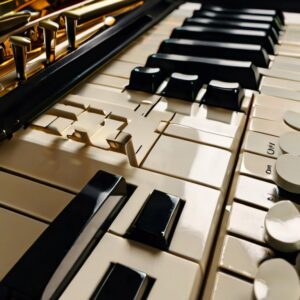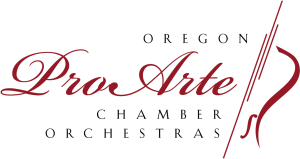Ah, contemporary classical music—what a wild ride it has been! You know, back in the day, classical music was all about structure, form, and eloquent beauty. Picture the grand halls filled with the harmonious works of Mozart, Beethoven, and Bach. But times change, and boy, have they changed. Contemporary classical music is like stepping into a parallel universe where the rules are constantly being rewritten. It’s where tradition meets innovation, creating something entirely fresh and exciting.
What is Contemporary Classical Music?

When we refer to “contemporary classical music,” we’re discussing a dynamic evolving genre, encompassing compositions created primarily from the mid-20th century up to the present day. This contrasts sharply with earlier classical music eras, such as Baroque Classical, and Romantic, which were defined by their adherence to specific stylistic conventions and structures, notably clear melodies and harmonic frameworks. Contemporary classical music, however, defies these earlier conventions, embracing a vast spectrum of styles and influences that make it unpredictable and often revolutionary.
The boundaries of what constitutes classical music have blurred. There are no strict guidelines or rigid frameworks dictating how music should be composed or performed. This shift has allowed composers an unprecedented degree of freedom to explore and amalgamate diverse influences, ranging from electronic music, with its innovative use of technology and sound manipulation, to jazz, with its emphasis on improvisation and complex rhythms. Elements from folk traditions, which bring a sense of cultural richness and history, and even pop music, with its widespread appeal and catchy rhythms, are frequently interwoven into contemporary classical compositions.
Pioneering composers such as John Cage, Philip Glass, and Steve Reich have been instrumental in shaping this genre. John Cage, known for his avant-garde and experimental approach, challenged listeners’ perceptions of music with works like 4’33”, which is built entirely on the ambient sounds of the performance environment. Philip Glass brought minimalism to the forefront with his repetitive, almost hypnotic structures, inviting listeners to experience subtle variations over time. Steve Reich, another key figure, utilized phasing and intricate rhythmic patterns to create deeply engaging auditory experiences.
These composers have pushed the boundaries so far that their works sometimes seem to defy traditional definitions of classical music. To some traditionalists, their innovative compositions, which venture into uncharted auditory territories, might not even be recognizable as classical music. This very transcendence of conventional definitions is what makes contemporary classical music so profoundly exciting and significant. The rules have become more like open-ended suggestions, fostering an environment where creativity truly knows no bounds and where the exploration of new sonic landscapes can flourish unrestrained.
Experimentation and Innovation
Contemporary classical music is synonymous with experimentation. Composers don’t just settle for conventional instruments. You’ll hear prepared pianos (screws and bolts placed between strings), electronic soundscapes, and sometimes even kitchen utensils used as instruments. Seriously, anything goes. This genre isn’t afraid to challenge listeners and traditional norms.
Take John Cage’s 4’33”, for example. It’s a piece that involves the performer sitting silently for four minutes and thirty-three seconds. The “music” is the ambient sound of the environment. Shocking, right? Yet, it’s a profound statement about what music can be.
Then there’s extended techniques—ways of playing instruments that produce unconventional sounds. String players might use their bows on different parts of their instruments, or wind players could use their breath and voice simultaneously. These innovations take sonic possibilities to new realms.
The Fusion of Genres
One of the coolest things about contemporary classical music is its ability to meld with other genres. It’s a melting pot where jazz, rock, folk, electronic, and world music all coalesce. This genre-blending is what keeps contemporary classical music so darn exciting.
Consider the Kronos Quartet, a string quartet notable for their forays into all sorts of musical excursions. They’ve collaborated with artists worldwide, from minimalist composers to rock musicians and even traditional African performers. The result? A constantly evolving sound that’s anything but predictable.
You also have composers like Mark-Anthony Turnage who infuse jazz rhythms and harmonies into their classical compositions. His opera, “Anna Nicole,” is a prime example—mixing elements of jazz, pop, and traditional classical music. It’s a rollercoaster of styles that still retains its classical roots.
The Role of Technology
We’re living in a digital age, and technology has had a profound impact on music. Contemporary classical composers are leveraging tech in unimaginable ways. Computers, synthesizers, and software like Max/MSP are as important as violins and pianos. Compositions can now incorporate electronic elements and real-time sound manipulation, making performances anything but static.
Look at composer Kaija Saariaho. Her works often blend live orchestral performance with electronic music. This intermingling creates rich, multi-layered soundscapes that offer a completely unique auditory experience.
And let’s not forget about film scores. Contemporary composers like Hans Zimmer and Jóhann Jóhannsson seamlessly integrate electronic music with orchestral arrangements, breaking the boundaries between film music and contemporary classical music.
The Global Influence
Classical music was once a very Eurocentric phenomenon. Think Austria, Germany, Italy—the big players. Contemporary classical music, however, is global. Composers from all around the world bring their unique influences into their work, leading to an incredibly rich and diverse tapestry.
Tan Dun, a Chinese composer, merges Western classical tradition with Chinese folk music. His piece “Water Concerto” uses water as a percussion instrument, blending sounds of splashes and drips with orchestral music. It’s an auditory journey that takes you across cultural boundaries.
Another example is Osvaldo Golijov. His works mix Latin American folk with traditional Jewish liturgical music, crafting pieces that cross cultural and musical borders.
Social and Political Themes
Contemporary classical music isn’t just about breaking sonic boundaries; it’s also a platform for social and political commentary. Composers use their works to voice opinions on issues like human rights, climate change, and existential questions.
John Adams’s “Nixon in China” and “The Death of Klinghoffer” are operas that critically examine historical and political events. In these works, music isn’t just art but a medium for reflection and dialogue.
Composers like Julia Wolfe and David T. Little tackle topics like labor rights and warfare, packing their music with messages that resonate with modern audiences. They’re not just composing for the beauty of it; they’re invoking thought, stirring emotions, and sparking conversations.
